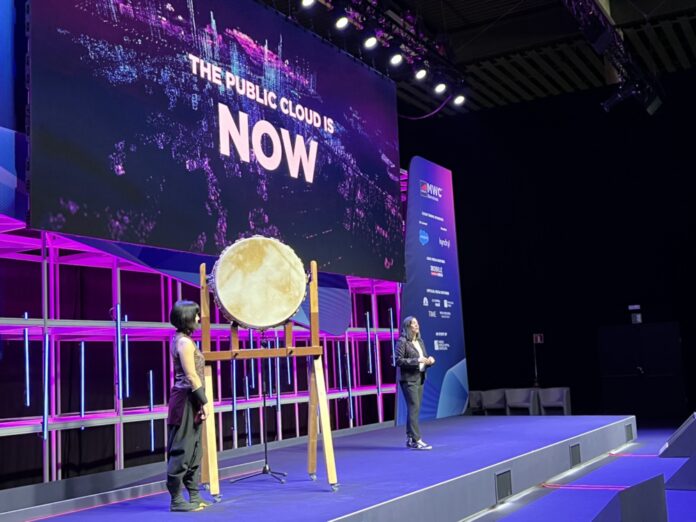Mobile World Congress 2022 had many themes but 5G dominated and the two most compelling presentations highlighted the bold choices facing mobile operators.
They suggest that if mobile operators want to get to the full 5G quickly, they must let someone else steer the vehicle. Chinese comms kit maker Huawei presented the case for mobile operators to get up to scale with hardware. By contrast, Texas-based TelcoDR presented the nightmare scenario of not selecting its option, the telco public cloud.
Huawei to disagree with the telco cloud?
Huawei unveiled a range of new 5G products and services focusing on industrial applications and sustainability. For Huawei’s rotating chair Guo Ping the world’s ‘hottest topics’ are digitisation and carbon neutrality. “We will continue our globalisation strategy, in standards, talent, supply chain and more,” said Ping.
Security challenged vendor
The security-challenged Chinese state vendor has signed more than 3,000 commercial contracts for 5G applications, which is a 100 per cent rise from 2020. Huawei also unveiled its latest wireless comms systems, introducing the latest inventions in the third generation of time division multiplexor technology which gets an even better performance out of massive multiple-input, multiple-output (MIMO) and FDD ultra-wideband multi-antenna products.
Huawei tech can triple the bandwidth of a 5G network
Huawei’s new massive MIMO products include the third-generation MetaAAU and BladeAAU series that double the antenna elements of its previous generation from 192 to 384. Huawei is the first in the industry to have achieved this, it claimed. New FDD products include the 4T4R RRU and the ultra-wideband 8T8R, which can triple the capacity of a 5G network.
IntelligentRAN nixed by the intelligence ban
Huawei’s new IntelligentRAN is designed to bring intelligence to almost all aspects of a wireless network. Sadly, none of this technology is relevant to European mobile operators, but they could be used in the Middle East and Africa, where Huawei is not considered a liability. In Europe most vendors have questions about what Huawei does with the intelligence it gathers.
Also seeking global dominance is TelcoDR, which advocates use of the public cloud to scale up. It is making converts among non-believers like Jamie Dimon, the CEO of JPMorgan Chase who is now convinced that the cloud goes ten times round the globe while hardware is still getting its bootstraps on, according to Royston.
DIY RANs come in for a Royston
“[Dimon] started out thinking the public cloud was just about outsourcing,” said Danielle Royston, CEO of TelcoDR, in the “Cloud is Now” presentation at MWC. Dimon had questioned the logic of moving to the cloud after he’d built his own data centre capacity, but on his latest earnings call, he made it clear that he was a cloud convert. “He said if he could spend two billion to get to the cloud tomorrow, he would do it in a heartbeat,” said Royston.
If telcos use the next 10 years to adopt the public cloud, change their culture and fix their net promoter score, they will be the future of the digital consumer, Royston said. Over 40 telco strategy officers are consulting with TelcoDR about moving to the public cloud, Royston claims.
Telco Cloudy with a chance of RAN
While operators ask themselves how to get more revenue they can’t start setting their services because every telco has a massive house clearance to perform.
“Inside a telco, there are thousands of legacy applications, running on-premise, loaded with tons of technical debt. It’s a heavily customised, heavily integrated, rat’s nest of crap,“ said Royston, adding, “Yeah, I said it – it’s a mess!”
Telco are slowed by three major problems, Royston told the audience. “Your systems are outdated, built on a tech stack from the 90s. Your data is messy, with different databases and data models. And your employees don’t know how to use the public cloud,” said Royston.
Software vendors give telcos bad customer experience
The problem with building systems with Open RAN components is that telcos have “ridiculously bad experiences with telco software vendors”. By contrast, cloud service can model tariffs in hours, finish charging pilots in weeks and go live in 60 days, Royston told Mobile Europe: “It’s an unparalleled experience for telcos when they are used to running in molasses. With the cloud telcos don’t have pay millions up front and can just start experimenting with the software.”
However, Royston identified a new problem within telcos, a form of Stockholm Syndrome: “The software vendors are bad but telcos put up with a bad experience because they’ve never known it any other way,” Royston said later, on Twitter. In a tweet, Royston announced TelcoDR’s sales team had signed 10 new deals and set up three new pilot projects from 100 meetings.



